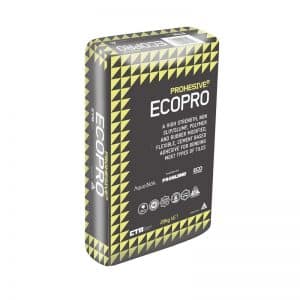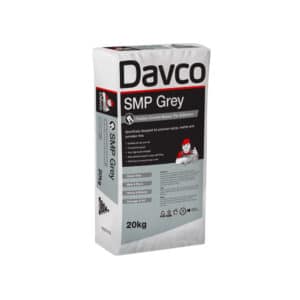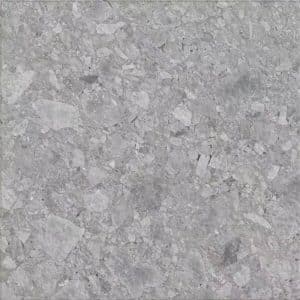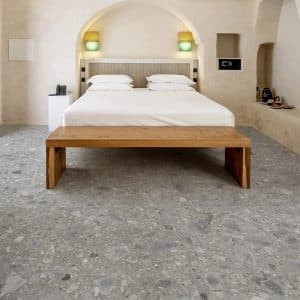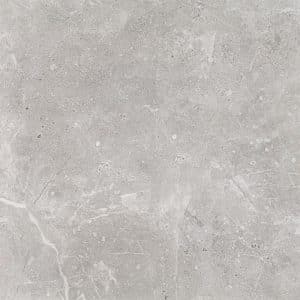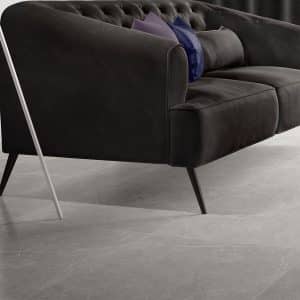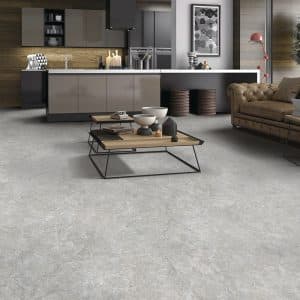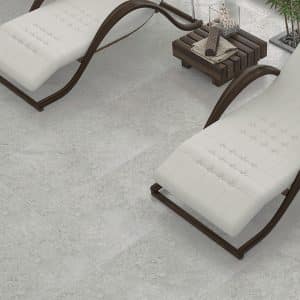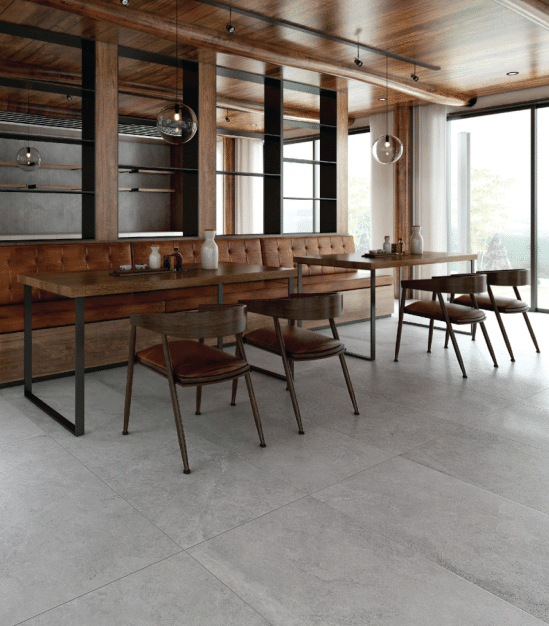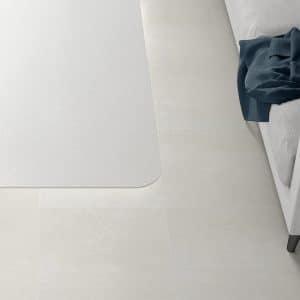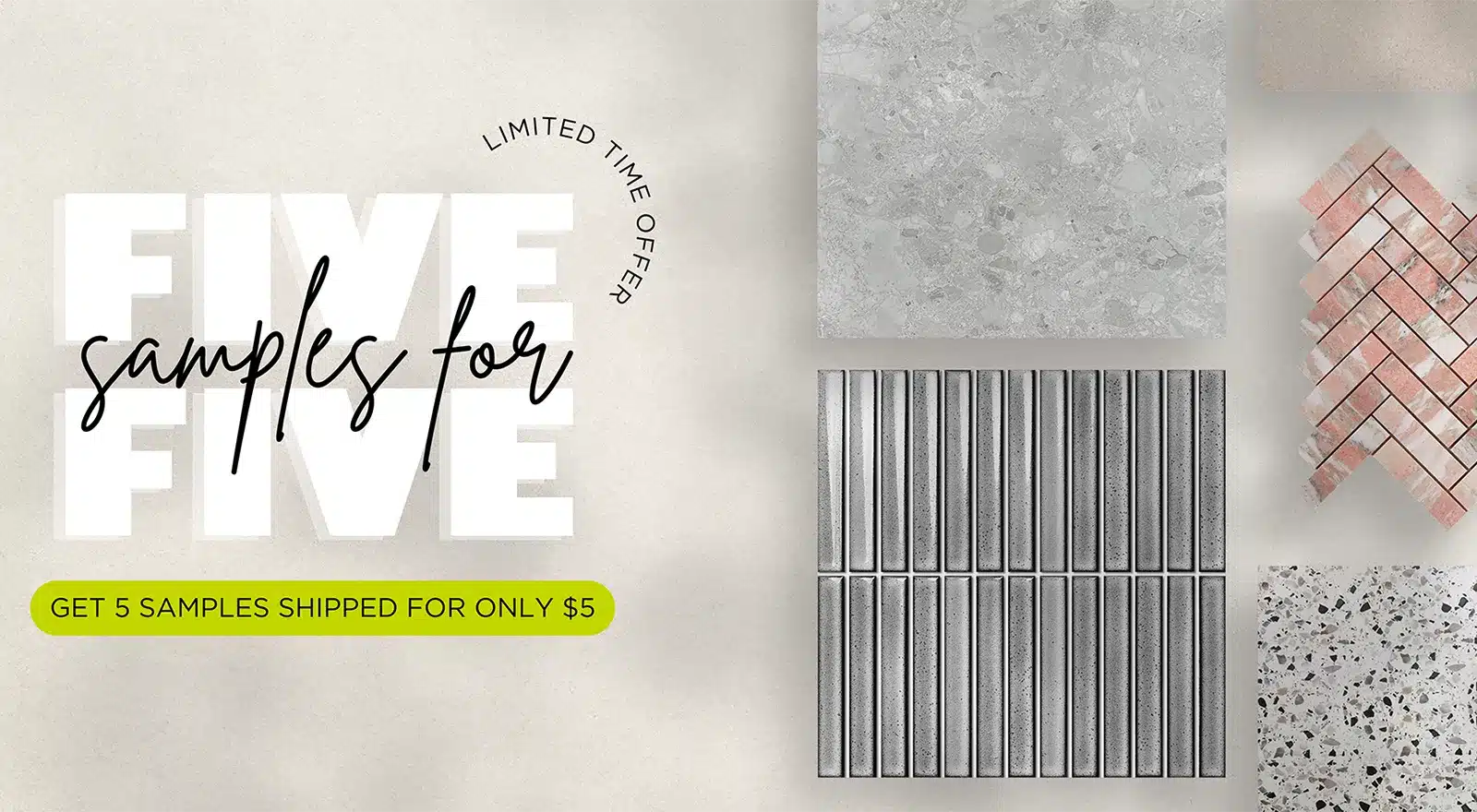Porcelain vs Natural Stone Tiles
Porcelain tiles and natural stone tiles are among the most popular choices for people trying to create a calming space with neutral tones and an earthy feel. But, just like any other material, each of these tiles comes with differences that make them more suited to different projects.
Below, you’ll find everything you need to know about porcelain tiles vs natural stone tiles. We’ll clearly explain the key differences, look at the advantages and disadvantages of both, and help you decide which is best for your individual needs.
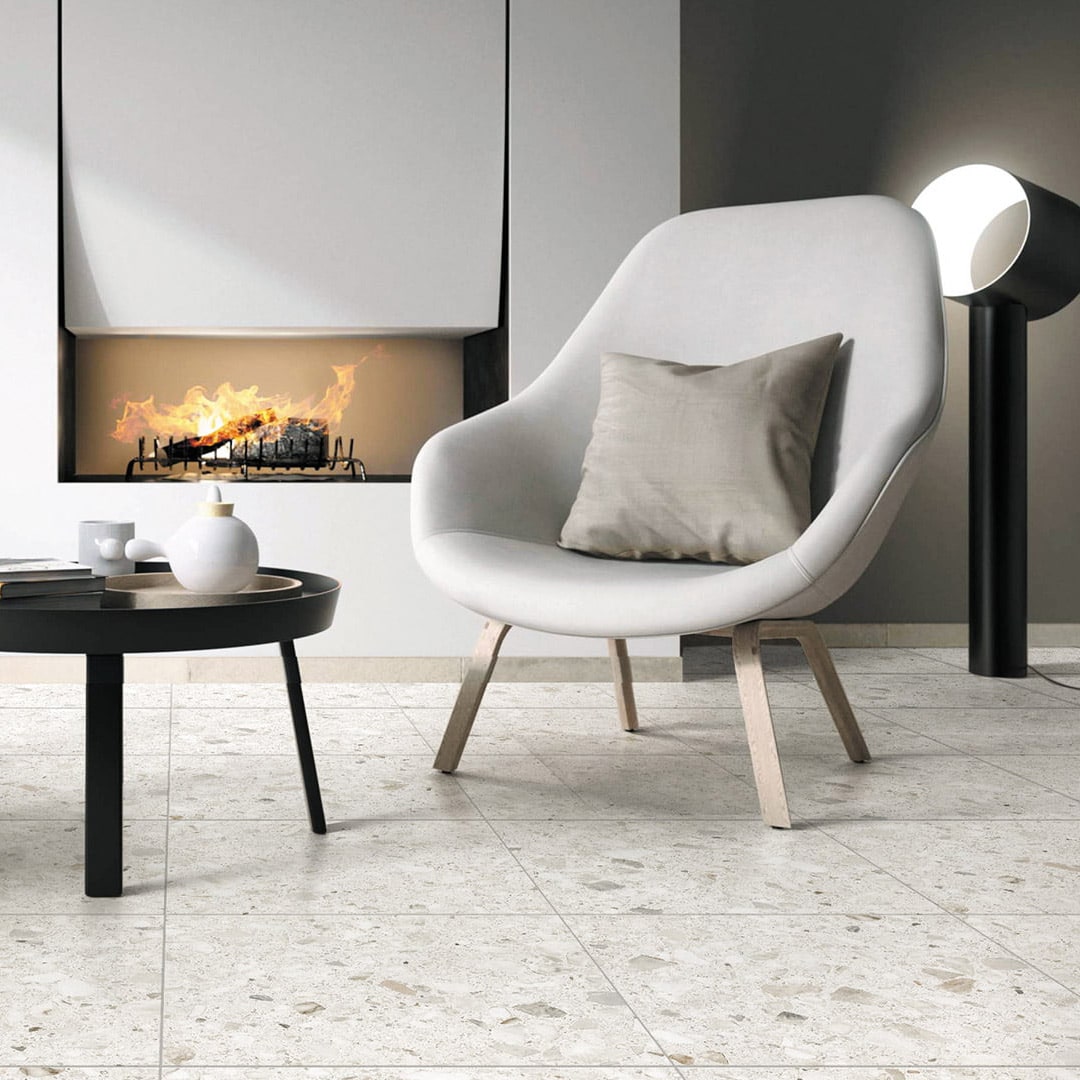
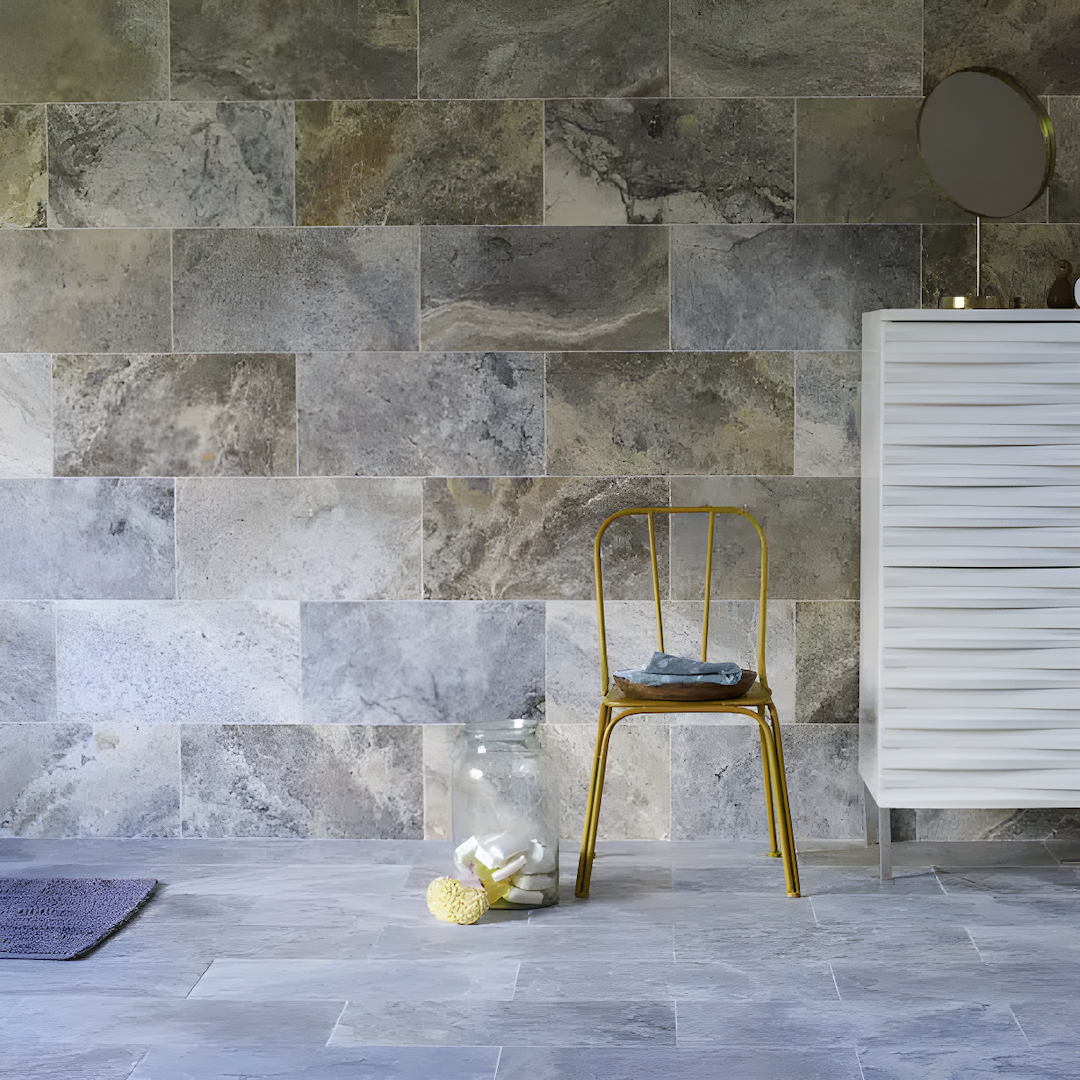
Porcelain Tiles vs Natural Stone Tiles at a Glance
Let’s start by comparing the key features of both porcelain tiles and natural stone tiles.
| Porcelain Tiles | Natural Stone Tiles | |
|---|---|---|
How They Are Made |
To make porcelain tiles, a mixture of white clay, finely ground sand, and feldspar is pressed into a mould and left to dry in order to reduce the moisture content before being heated at super high temperatures. | As its name suggests, natural stone tiles are made entirely from natural stone that has been formed over time by water and minerals. To form the stone into tiles, huge pieces are cut from quarries, taken to factories, and cut into the tile shapes. |
Durability |
Porcelain tiles are very durable as the materials and high temperatures used to make them result in a very dense tile that is resistant to cracking, water damage, and stains. This makes them a good choice for use both indoors and outdoors. | The durability of natural stone tiles will ultimately depend on the type of stone tile. Limestone and slate, for example, are less durable than marble, granite, and travertine. |
Lifespan |
While both porcelain tiles and natural stone tiles are highly durable, porcelain tiles have a slightly shorter lifespan. It certainly isn't fleeting though, and porcelain tiles that have been properly cared for can last up to 75 years. | In comparison, natural stone tiles have a very long life span of up to 100 years when properly maintained |
Cost |
Porcelain tiles are less expensive than natural stone tiles, so they are a better choice if you're torn between the two materials but are trying to stick to a lower budget. | Regardless of what type of stone tile you choose, natural stone is more expensive than porcelain. Marble, in particular, is one of the most expensive tile materials, and along with the cost of the installation process, can easily eat into your budget. |
Ease of Cutting |
Porcelain tiles are easier to cut than natural stone, and a professional will be able to shape them using a specialist tile cutter. | The ease of cutting natural stone will, again, depend on the type of stone you've chosen, as some are softer and easier to shape than others. However, all natural stone is tougher to cut than porcelain, and most require the use of a wet saw and a diamond-encrusted blade, which is something most DIY-ers won't typically have in their toolbox. |
Water Absorption |
Of the two, porcelain tiles have the lowest water absorption rate and are incredibly water resistant. This makes them a good choice for bathrooms where water is likely to be splashed often, as well as outdoor areas. | As they are made from natural materials, stone tiles have a very high water absorption rate. For this reason, many types of stone tile, such as travertine, need regular sealing with a special coating. |
Maintenance |
It's very easy to maintain porcelain tiles, and regular cleaning is usually enough to keep them looking good for many years. | All types of stone tile are porous to a certain degree, which makes maintenance a little harder. Some tiles will need treating with special coatings, and others will need cleaning with a specialist detergent. |
Best Used For |
It's best to choose porcelain if you're tiling wet areas, such as a shower or backsplash. Their non-porous properties also make them the best choice for outdoor areas, as they are extremely durable against the elements. | One of the best ways of using natural stone tiles in your home is by laying them on the floor. They are unlikely to get regularly wet and will generally be durable enough to handle high traffic areas with heavy footfall. |
Pros & Cons of Porcelain Tiles
Still not sure which you should choose? Let’s explore the benefits and disadvantages of porcelain tiles in more detail.
What Are the Benefits of Porcelain Tiles?
Many homeowners choose porcelain tiles because they are non-porous and water resistant, which makes them a really good choice for areas where water, steam, and other liquids are likely to come into contact with them. These non-porous properties also make them highly resistant to stains, making them an excellent choice for kitchens.
Porcelain tiles are easier to cut into shape compared to natural stone tiles as well, which makes them a better choice if you’re working with an awkward space.
Another benefit of choosing porcelain tiles is that they are less expensive than natural stone, so if you’re trying to stick to a lower budget (but don’t like the idea of a ceramic tile), porcelain tiles are the way to go.
What Are the Disadvantages of Porcelain Tiles?
The biggest disadvantage of porcelain tiles is that they limit your choices of colours and patterns, whereas the grain found in natural stones offers something a little more interesting and unique for your space.
Porcelain tiles also have a shorter lifespan than natural stone tiles, and while you still get up to 75 years out of them, it’s still something to consider in terms of longevity for your project.
Who Are Porcelain Tiles Best For?
Porcelain tiles are best used in areas that are going to see a lot of water or potential staining, such as splashed food. This makes them a particularly good choice for kitchens, but they are also good for bathrooms, wet rooms, and a laundry room.
Porcelain tiles would also suit those working with a lower budget as they are less expensive than natural stone tiles.
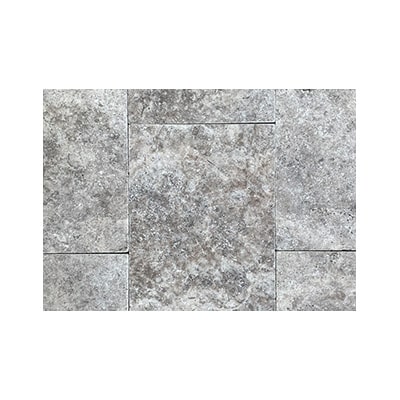
Silver Travertine Tumbled Stone (French Pattern Style)
$109.95 / square metre
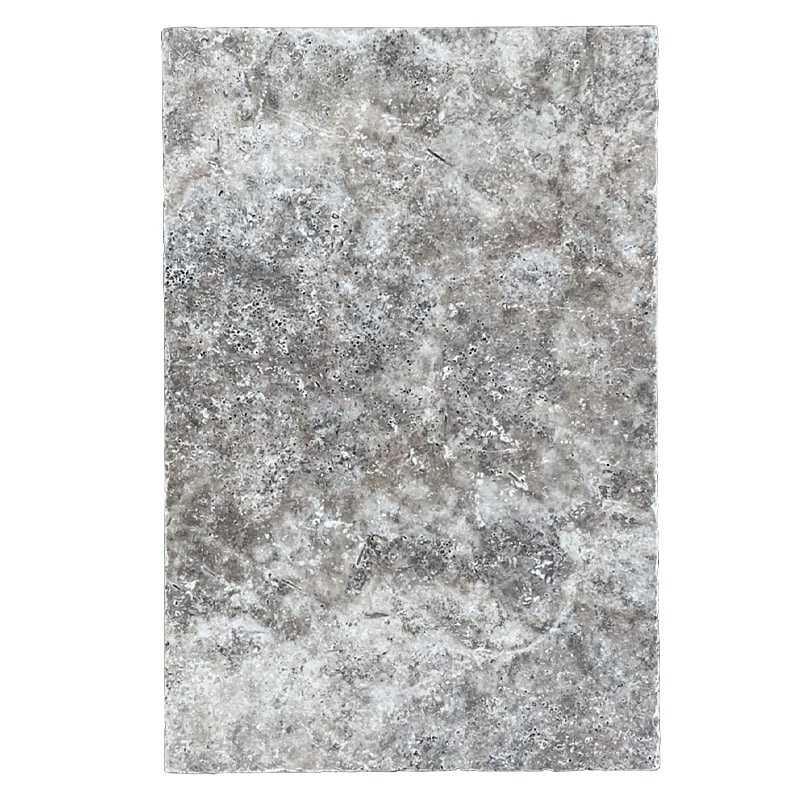
Silver Travertine Tumbled Stone pavers 406x610x30
$119.95 / square metre
Pros & Cons of Natural Stone Tiles
Now, let’s take a more detailed look at the pros and cons of natural stone tiles, along with what they’re best used for.
What Are the Benefits of Natural Stone Tiles?
One of the biggest benefits natural stone tiles have to offer is their longevity, and if properly sealed and cared for, they can last for up to 100 years.
You’re also guaranteed to get a unique texture and pattern with natural stone, as no two pieces will be the same due to their natural formation. This makes them a very good choice if you’re trying to avoid a uniform appearance in your space or create an interesting focal point.
What Are the Disadvantages of Natural Stone Tiles?
Unfortunately, when compared to porcelain tiles, natural stone tiles come with quite a few disadvantages. To begin with, they are a less durable tile, depending on the stone used to make them, and can be prone to chipping or cracking.
As they aren’t mass produced in the way that porcelain tiles are, there can often be a limited supply of natural stone tiles, too. This can make it harder to find enough tiles to cover a very large space.
The cost of natural stone tiles is also higher than porcelain tiles, so they aren’t a good choice if you’re working with a limited budget. They are also harder to cut, harder to maintain, and have a higher water absorption rate.
Who Are Natural Stone Tiles Best For?
Natural stone tiles are best for people who want a unique look with different grains and patterns within each individual tile. Despite being more prone to water damage and stains, their hard nature also makes them a good choice for flooring. You can, of course, use them on walls, but it would be best to choose a natural stone that won’t get damaged by water, steam, or staining hazards too easily.
Final Thoughts on Choosing Between Porcelain & Natural Stone Tiles
In the case of porcelain vs natural stone tiles, the clear winner is porcelain. Not only are they more durable and require less maintenance, they are easier to cut, cost less money overall, and can be used both indoors and outdoors without worrying about water damage or staining. Natural stone tiles aren’t without merit, however, and they are a very good choice if you’re looking to create a unique look that, if cared for properly, can last for up to 100 years.

